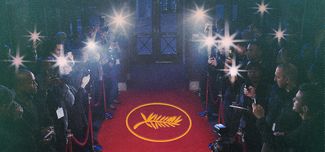The Middle Kingdom’s booming Christian community celebrates Christmas
Worldwide, there are two kinds of Christmas. While both are a time of joy, one is relatively secular; its trappings are Christmas trees, gifts, reindeer, and the jolly, red, fat version of Saint Nick (going by 圣诞老人, or Christmas Elderly Person in China).
China’s got its own version, similar to Valentine’s Day in many respects. It’s a time for couples, and malls bringing out Christmas trees which are often the centerpiece of a thematically confused display. In one example in the capital, shoppers were greeted by a grand display with the theme “Rock and Roll Christmas under the Sea”, complete with Beatles turtles and what looked like a shark James Brown.
The confusion is somewhat ironic given China’s status as the largest producer of Christmas products. If Santa’s factory exists, it is not at the North Pole. It’s in the factory town of Yiwu, in Zhejiang Province.
But beyond the tinsel, there is a large, disparate group of Chinese for whom the themes of Christmas are crystal clear: the rapidly growing Christian community.
Nobody has any idea how many Christians China really has. It’s certainly in the tens of millions, perhaps even the hundreds of millions, making China possibly home to the world’s largest population of Christians.
According to a member of Beijing’s Zion Church (one of the largest “house churches” in Beijing) who is involved in organizing the congregation’s 2015 Christmas ceremony, attendance booms at Christmas. Churchgoers bring friends and colleagues, often curious about the religious foundation of Christmas. Where the Zion Church might usually have up to 500 attendees at a normal service (held thrice on Sundays, once in Chinese, once in Korean, and once in English), at Christmas time this booms to well over 2,000.
The content of these celebrations is often fairly similar to what would occur at a Western Christmas church service. “Hallelujah” and “Silent Night” are popular carols and there is a focus on the birth of Jesus and the journey of the three wise men. The numbers during Christmas are generally too large to be able to organize communion.
The term “house church” is an interesting one, a definition that fits their origins as small church groups operating outside the auspices of the large state-sanctioned churches, like the Three-Self church. This isn’t exactly what they are today.
These house churches occupy an interesting position—not technically legal but generally free to operate, albeit with a certain degree of pressure from authorities and fearful landlords. Many of them are now much larger than the name “house church” would suggest. In the case of the Zion Church, they now occupy the entire third floor of a building, after moving from smaller, much more modest premises on the fifth floor of the same building. Despite unease from landlords in the building when they wanted to expand, the move proved successful. This was necessary partly due to the fact the Zion Church drew in a lot of new congregants after the Shouwang Church, once the largest house church in the city, was dispersed. House churches are, of course, not as large as the formally sanctioned churches, which draw even bigger crowds each year.
With large budgets, formal approval, and larger venues, churches like the Three-Self church can put on grand Christmas performances each year. Unsubstantiated rumors circulate of government officials, technically required to be atheist, going along to join the show and take in the performances by professional singers lured from around the world. While the house churches may lack the financial power and heft of the state-backed churches, they do have another resource in abundance: enthusiasm. After an energetic service in mid-October, one of the Zion Church members said that this Christmas they are excited to have snagged some professional performers, their performance made possible by the fact that, aside from a space to practice and equipment, they would be performing free of charge.
Of course, the nature of Christmas and Christianity in China differ from location to location.
Christianity has a presence in parts of rural China, often due to the efforts of missionary groups like Bibles for China or Chinese evangelicals who travel to remote areas. In 2013, the Christian Broadcasting Network followed preacher Duan Huilai to remote parts of China as he carried out baptisms. Duan told the network “Sometimes I baptize them in a river… sometimes they are baptized in the back of a pickup truck. A couple of times I’ve conducted baptisms in the shower. Very often we just have to improvise.”
In particular, rural areas in China, lacking churches or effective Christian networks, are believed to be witnessing a rise of “house churches” in a more literal sense, but reliable information is hard to come by. Interestingly, one report into rural Christianity pointed out that faith-healing was often a draw.
It’s a sign of how in these rural areas Christianity can sometimes fuse with local beliefs in interesting ways. This is far from a new issue. In the 17th and 18th centuries, the Catholic Church faced the conundrum of whether certain Confucian rituals should be classed as religious and therefore incompatible with Catholicism.
Popes and Emperor Kangxi of the Qing Dynasty (1616 – 1911) weighed in, but even today whether or not Confucianism is a religion is an open-ended question. Since 1939, by papal decree, it has been acceptable for Chinese Christians to observe Confucian rites, and since the 60s “native traditions” have sometimes been formally sanctioned by the Catholic Church. So, for Catholics at least, Christmas and Confucianism have an uneasy truce.
“Critical Mass” is a story from our newest issue, “Mental Health”. To read the whole piece, become a subscriber and receive the full magazine. Alternatively, you can purchase the digital version from the iTunes Store.












